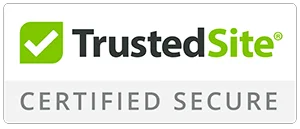
Queens’ high caseload, often exceeding 148,000 pending deportation cases alone, demands meticulous preparation. Unlike quieter suburban locations, officers here undergo specialized training in cultural competency. This enables them to handle the borough’s mix of nationalities, from Latin American to South Asian immigrants.
Here, processing times for forms like I-485 average 8.7 months for family-based adjustments. Hence, knowing the step-by-step flow empowers you. At Queens Immigration Attorney, we break down the security protocols, document reviews, interviews, and more. Our attorneys help you gain actionable knowledge to handle the immigration office with ease.
Key Statistics:
- The immigration office processes Form I-90 green card renewals in an average of 4.3 months.
- Completed deportation cases nationwide reach about 374,000 in FY 2025 through February. Affecting workflows.
- Fiancé petitions via Form I-129F require 8 to 11 months in FY 2025.
- Regular nonimmigrant worker petitions on Form I-129 at the immigration office process in 3.7 months during FY 2025.
- Naturalization applications on Form N-400 average 5.5 months in FY 2025.
- The immigration office contributes to a national backlog of 3,687,750 active cases as of February 2025.
- Advance parole travel documents on Form I-131 average 6.1 months in FY 2025.
Security Procedures and Entry Protocols at the Immigration Office in Queens
Officers receive cultural sensitivity training to improve service. The process is often faster but less tailored to varied language and mobility needs in smaller field offices. By understanding these steps, you avoid delays and make your appointment more efficient. A Queens immigration attorney can help you prepare and bring the correct documents.
Enhanced ID Verification Process
Officers at the immigration office begin by checking a government-issued photo ID. Comparing it with your USCIS appointment notice. This step checks that there are no mismatches before you proceed. Queens handles many family-based cases; hence, officers may verify relationship evidence on-site.
- Bring your appointment notice and unexpired ID, such as a Green Card, passport, or driver’s license.
- Have original relationship documents if your case involves family sponsorship.
- A missing or mismatched ID can delay your entry.
- Keep your documents organized in a small, clear folder.
These ID checks are strictly followed to protect the integrity of the process.
Metal Detector and Bag Screening Protocols
All visitors must pass through advanced metal detectors. Officers scan bags using X-ray machines for prohibited items. Updated screening technology in Queens speeds the process compared to older systems in other boroughs.
- Avoid bringing oversized backpacks or luggage.
- Place small items in a clear plastic bag for easy screening.
- Be ready to remove belts, keys, and electronics for inspection.
- Allow extra minutes for screening during peak morning hours.
An experienced Queens immigration attorney can advise you on what to bring and what to leave at home.
Multilingual Signage and Staff Assistance
Signage appears in English, Spanish, and Mandarin throughout the entrance area. This helps direct visitors quickly to the right lines and windows. At busy times, bilingual staff offer translation assistance immediately after security. The goal is to reduce confusion and keep traffic moving in a high-volume setting.
- Look for clearly marked signs to confirm your next step.
- Use staff assistance if you’re unsure about instructions.
- Ask for a language-specific flyer if you need one.
- Bring an interpreter for languages not supported at entry.
Appointment Confirmation and Waiting Area Assignment
Officers scan the barcode on your appointment notice. They direct you to a specific waiting area based on your case type, such as biometric services or interviews. This system manages the large daily visitor volume effectively.
- Keep your notice unfolded for quick scanning.
- Follow the color-coded or numbered seating assignments.
- Listen for your name or number when called.
- Avoid switching seats, which can delay your turn.
The immigration office uses this organized seating method to handle hundreds of daily cases without chaos. An immigration attorney can explain the flow of your appointment so you know exactly what to expect. Read our client reviews here.
Emergency and Accessibility Accommodations
The immigration office in Queens features wheelchair ramps directly to the entrance. Officers prioritize processing for visitors with disabilities or medical needs. ASL interpreters are available on request, often exceeding the accommodations offered in less diverse locations.
- Notify staff at entry if you require mobility assistance.
- Request an interpreter in advance through USCIS.
- Bring any medical documentation that supports your request.
- Arrive early to arrange these accommodations before your appointment time.
The immigration office maintains these measures to provide equal access for all visitors.
How Does the Order of Documentation Review Affect Processing Time in Queens?
Queens has a large caseload, especially in family-based immigration. Officers review the most common evidence types first to manage the daily queue. This approach helps them manage straightforward cases quickly while isolating files that need extra review. The immigration office in Queens applies these standards consistently across all applicants.
Photographs and Initial Identity Checks
Officers begin with 2 passport-style photos. They confirm the images meet the USCIS size, background, and quality rules. Then, they check that they were taken within 30 days of filing. This step verifies identity before reviewing other records. Processing slows if the photos are out of date, altered, or printed incorrectly.
- Photos must be in color, and on a white or off-white background.
- They must be unmounted, unretouched, and printed on thin glossy paper.
- Officers reject photos taken outside the allowed 30-day window.
- Defective photos lead to a Request for Evidence (RFE) and rescheduling.
Birth Certificate and Secondary Evidence
Officers examine the birth certificate. They use it to confirm citizenship, identity, and family relationships relevant to derivative status. Applicants may present secondary evidence if the primary birth record is unavailable. USCIS in Queens follows the Department of State’s Reciprocity Schedule to determine acceptable substitutes.
- A certified translation is mandatory if the document is not in English.
- Officers may accept affidavits if both primary and secondary records are unavailable.
- Letters from civil authorities can confirm a document’s non-existence.
- Missing or faulty translations can delay the process.
A Queens immigration attorney can guide you in collecting proper substitutes if your birth certificate is unavailable.
Evidence of Admission or Parole
Officers then review evidence proving inspection and legal entry. Common documents include entry stamps in a passport, Form I-94, or a parole authorization. In cases where an applicant claims to have been “waved in” at a port of entry, additional proof is required. The officer checks that this evidence matches USCIS records and any underlying petitions.
- Acceptable documents include Form I-94, Form I-512, or Form I-512L.
- Officers compare details against the applicant’s stated entry history.
- Discrepancies can trigger further questioning or RFEs.
- Claims of being “waved in” without inspection require credible corroboration.
The immigration takes extra care with this review due to the borough’s diverse mix of entry circumstances.
Affidavit of Support and Related Forms
The affidavit of support is reviewed next to confirm that the applicant has financial backing. Officers check the sponsor’s income and assets to confirm that the applicant will not become a public charge. This step is critical for most family-based petitions and some employment-based cases involving relatives.
- Officers confirm the form version and that all pages are signed.
- They compare sponsor income to the federal poverty guidelines.
- Supporting tax returns and employment letters must match the stated income.
- If assets are included, officers verify their value and accessibility.
Incorporating Local Cultural Competency and Language Support at Interviews
Queens’ approach differs from more standardized NYC interview settings. Officers here undergo targeted cultural awareness training to engage respectfully with diverse applicants. Language access is prioritized to prevent misunderstandings that could affect application outcomes.
Availability of Certified Interpreters
At the immigration office in Queens, officers make certified interpreters available in over 50 languages. Applicants can request them when scheduling or rescheduling their appointments. Common languages include Spanish, Mandarin, and Punjabi, reflecting the borough’s largest immigrant groups.
- Request an interpreter when confirming your interview date.
- Bring your interpreter only if the language is not offered.
- Confirm that the interpreter understands USCIS rules for neutrality.
- Allow extra time for interpretation during your session.
Cultural Sensitivity in Questioning
Officers receive training to phrase questions in a way that respects cultural norms. This reduces discomfort and builds trust during the interview. The training covers local cultural and religious considerations drawn from Queens’ diverse population.
- Officers avoid abrupt personal questions without context.
- They rephrase or clarify if a cultural misunderstanding occurs.
- Applicants may explain if a question touches on sensitive traditions.
- Officers record any cultural notes that may aid case review.
Need help preparing for immigration interview in Queens? An experienced Queens immigration attorney can prepare you for common interview topics and help frame culturally sensitive answers.
FAQs
How do I know which field office is processing my case?
Use your zip code on the USCIS website to locate it. Check your receipt notice for the assigned office. Contact USCIS if unsure. This helps you visit the right location.
How to speak with a USCIS agent?
Call the USCIS Contact Center. Use your online account for inquiries. Schedule an InfoPass appointment if needed. Agents at the immigration office in Queens provide case-specific guidance.
How do I check my immigration status?
Log in to your USCIS online account with your receipt number. Visit the Case Status Online page. Call the Contact Center for updates. This tracks progress in real-time.
What time does USCIS update case status?
Updates occur daily around midnight Eastern Time. Check early morning for changes. Not all cases update nightly. Patience helps during busy periods.
How do I write a letter to USCIS about case status?
Address it to the processing office. Include your receipt number and details. Explain the inquiry clearly. Send via certified mail.
What does “USCIS has begun working on your case again” mean?
It signals resumed review after a pause. This follows RFEs or holds. Expect further updates soon. Contact the immigration office in Queens if no progress follows.
What to do if my USCIS case is taking too long?
Submit an e-Request online. Call the Contact Center. Consider a service request. If extreme, consult an attorney for mandamus.
What’s next after USCIS approval?
Receive your approval notice. Proceed to the visa or adjustment steps. Gather more documents if required. Track via your online account.
Why does USCIS cancel interviews?
Reasons include incomplete files or scheduling conflicts. Weather or facility issues play roles. They reschedule automatically. Check notices from the immigration office in Queens for details.
How do I confirm my immigration status?
Use the USCIS online tool with your A-Number. Request an appointment. Verify via E-Verify if employed. Official letters provide proof.
Partner with a Queens Immigration Attorney
The immigration office in Queens mirrors the borough’s vibrant diversity. It also shows the complexities that can overwhelm even the most prepared applicant. A dedicated Queens immigration attorney can transform potential setbacks into smooth progress. Aligning your story with the opportunities America offers. Reach out today to schedule a free consultation.




